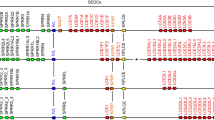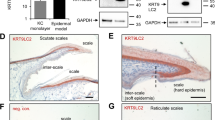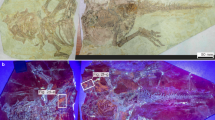Abstract
MOST accounts of rhinoceros skin detail its more obvious characteristics, namely, its rough, wrinkled and mammillated exterior, its well-keratinized epidermis and its thick, weighty and inelastic dermis. Concerning the structure of such skin and the possible presence of epidermal derivatives (other than horns) information is curiously wanting in authoritative zoological treatises1. It is frequently stated that body hairs, save those constituting the ear- and tail-fringes, are lacking in the Rhinocerotidae, though Beddard2 recognized an unobtrusive and rather sparse hairy covering as a general familial character.
This is a preview of subscription content, access via your institution
Access options
Subscribe to this journal
Receive 51 print issues and online access
$199.00 per year
only $3.90 per issue
Buy this article
- Purchase on SpringerLink
- Instant access to full article PDF
Prices may be subject to local taxes which are calculated during checkout
Similar content being viewed by others
References
Flower, W. H., and Lydekker, R., “Introduction to the Study of Mammals, Living and Extinct” (Black, London, 1891). Oppel, A., “Lehrbuch der vergl. mikroskop. Anat. der Wirbeltiere” (Fischer, Jena, 1896–1916). Weber, M., “Die Säugetiere” (Fischer, Jena, 1928). Grassé, P.-P., “Traité de Zoologie”, 17 (1), 1109 (Masson, Paris, 1955).
Beddard, F. E., “Cambridge Natural History”, 10, “Mammalia”, 253 (Macmillan, London, 1902).
Neuville, H., Arch. Mus. Nat. Hist., Paris, (6 Sér.), 2, 179 (1927).
Lydekker, R., “Horns and Hoofs” (Cox, London, 1893).
Bigalke, R., et al., Proc. Zool. Soc., 120, 519 (1950).
Author information
Authors and Affiliations
Rights and permissions
About this article
Cite this article
CAVE, A., ALLBROOK, D. Epidermal Structures in a Rhinoceros (Ceratotherium simum). Nature 182, 196–197 (1958). https://doi.org/10.1038/182196a0
Issue date:
DOI: https://doi.org/10.1038/182196a0



